Bang & Olufsen Beosound Explore review: refined Bluetooth speaker inside, tough shell outside
The B&O Explore is a Bluetooth speaker make to sing sweetly even when tumbling down a mountainside
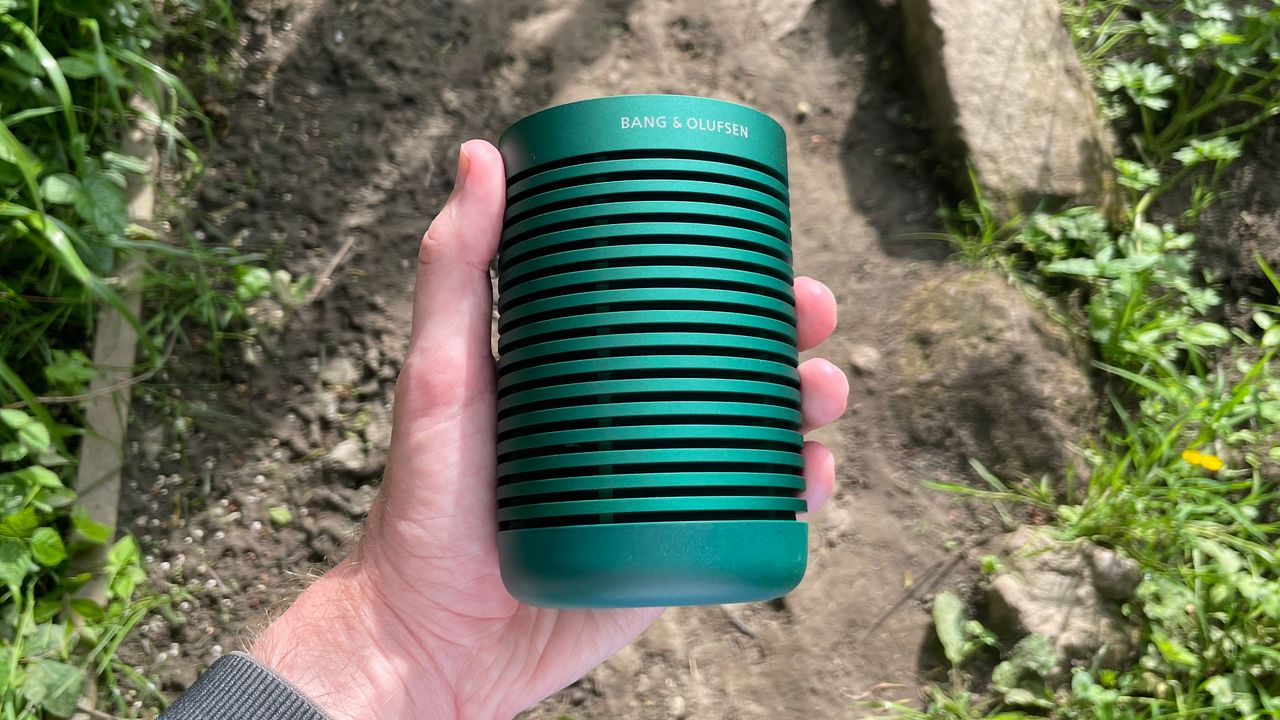
The B&O Explore manages to look great while being tough as nails, and its sound is as accomplished as you'd expect from B&O. It small size means audio is a bit constrained, but that's to be expected – this is a great outdoors companion.
-
+
Excellent balance
-
+
Attractive, tough design
-
+
Great small size
-
-
Sound isn't expansive
-
-
A little heavy
-
-
No 3.5mm audio input
Why you can trust T3

This Bang & Olufsen Beosound Explore review came at just the right time, because I was able to take B&O's new tough, waterproof Bluetooth speaker out with me on the many impossibly cool extreme sports that I do. Okay, well, on some countryside hikes and to the park.
The Explore is a direct competitor to the likes of the Sonos Roam – ie, it's a pocket-sized speaker with IP67 dust- and waterproofing, and an extremely robust build, so that you can take it out and about and not worry about it getting crushed or dropped.
Well, I say "pocket-sized", but it's about the same diameter as a water bottle, so it might not fit in your jeans, but it'll tuck into your backpack no problem. But that's if you even want to hide it – it's the best-looking of these tough little speakers by a long way.
Despite the small size, B&O has put all the care and attention you'd expect into its audio, and I'm seriously impressed with the results. It's one of the best Bluetooth speakers available now, no question… but it's not perfect, and the big question is whether you might be better off with the JBL Charge 5 or B&O's own T3 Award-winning Beosound A1 v2, which is dangerously close in price. So let's get into it.
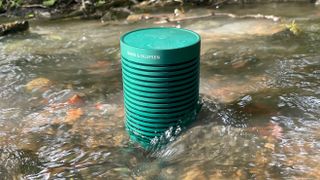
Bang & Olufsen Beosound Explore review: Price & release date
The Explore launched in May 2021, and costs £169/$199. Once upon a time, that would be fairly steep for a small rugged speaker – after all, the Ultimate Ears Wonderboom 2 has been dominating this sector for a long time, is about the same size, and costs around £90/$100.
Times have changed, though. The aforementioned Sonos Roam and JBL Charge 5 both break the £150/$150 barrier in their pursuit of high-quality sound in a portable package, and with B&O's history, that's exactly where it should be aiming. So it has.
Bang & Olufsen Beosound Explore review: Features & what's new
The Explore is equipped with Bluetooth 5.2 for its wireless duties, and promises to play for a whopping 27 hours at a "typical listening volume". My experience is actually that you lose 3-4% per per hour listening at a comfortable volume indoors (around 40%), so that estimate seems bang on. If you need to crank it up for outdoor listening over a gentle wind for a long time, you may get a little less than 27 hours, but it still makes the 10 hours of the Sonos Roam look positively fleeting.
It connects to the B&O app, which means you can can adjust the sound profile (we'll talk more about this later) or pair two into a stereo set.
One thing that's notably missing is any kind of smart assistant connectivity – I don't personally mind not having this on my portable speakers, but the B&O A1 includes Alexa, and the Sonos Roam includes both Alexa and Google Assistant, so you should look to those if you want voice control. (Though only the A1 can do voice control when you're away from Wi-Fi.)
There's also no 3.5mm input jack, which again is pretty typical these days, but is a bit of a shame if you want to connect to a random audio source. That said, Bluetooth pairing is really quick and overall seamless, so switching to someone else's phone doesn't take much effort.
It's IP67-rated, which means it's very well sealed against dust ingress, and can survive in up to 1m of fresh water for up to 30 minutes. I have not left it for that long, but it's come out of lighter dunkings without problem so far.
In the box, you get a USB-C cable for charging, and a carabiner – both of which match the colour of your Explore.
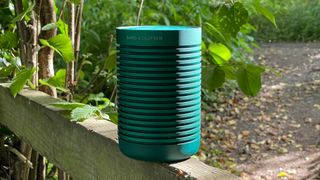
Bang & Olufsen Beosound Explore review: Design
I absolutely love the look of the Explore. It's one of my favourite gadgets I've seen in years. With its ribbed design, and gleaming aluminium finish, it looks like if the Capitol Records building had been part of the Blade Runner skyline.
It doesn't just look cool, though. The ribbed design is a clever part of what makes this such a sturdy speaker. A circle is the most robust shape, and the outside of the Explore is basically just metal rings that are several millimetres thick attached to four metal pillars. Making this outside panel ribbed is smart, because it reduces the weight while giving the sound somewhere to escape. Through the ribs, you can see a fabric that again matches the colours you've chosen.
The bottom of the unit has a rubberised finish in a slightly different shade, which is wise – aluminium isn't the most pleasant material to feel scraping against other surfaces. I should also note that aluminium is quite a soft metal, so while being made of the stuff will protect the electronics inside the Explore really well, a drop only a rock may well cause a ding in the metal. But it'll only be cosmetic.
The Explore comes in "Black Anthracite", "Grey Mist" and, er, "Green" finishes. Despite the less imaginative name for the latter of these, I'll be judging you harshly you don't choose it. It's such a rich forest green, and just adds to the idea that this thing is meant to survive nature.
Its size of 81x124x81mm makes it much smaller in terms of volume than the JBL Charge 5, and is similar in overall volume to the Sonos Roam. It's easy to grab and hold in your hand (as mentioned, it's about the width of a water bottle), and ribbed design mean there's no chance of it slipping out. There's a waterproof handle attached to the bag for an even better way to hold it.
On top is a waterproof membrane with controls. They look like touch buttons, but they actually press properly – and they're just the right level of clickiness.
It weighs 631g, which is significantly more than the Sonos Roam and UE Wonderboom 2, both of which clock in at around 420g. However, it's not a major weight, and the JBL Charge 5 is over 900g, so it's still doing well in the grand scheme.
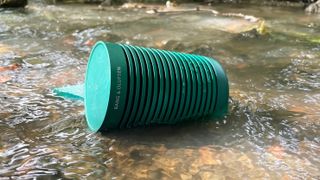
Bang & Olufsen Beosound Explore review: Sound quality
The Explore's impressive trick is how refined and well balanced it is for such a small speaker. Dual 1.8-inch full-range drivers are responsible, with 30W of Class D amplification each.
Fidelity is the name of the game here – whereas many small speakers will understandably attempt to overcome their size limitations buy ramping up the bass and treble, the Explore has no such interests.
Every aspect is weighted just right against the others to my ear – bass is present and firm, but not showy. The mid-range is warm and gives acoustic tracks presence and pop tracks warmth. The treble is detailed and clear, but never overly sharp.
I think the presentation is a little more poppy than some other B&O speakers, which I often choose to slightly ramp up the bass and treble on. Here, I was happiest with the basic presentation.
The main issue is that it's not expansive. It sounds like it's coming from a single small unit, even if it does push sound out in 360 degree well. Cranking up the volume reveals that it keeps control really well, avoiding the distortion that can plague small speakers, but it doesn't open up the sound much more. And while it can go loud enough for my taste, it's not quite a field party starter on its own.
And while I'm happy with the amount of bass on offer given the overall sound balance, it's much less powerful than the bass on the Sonos Roam. I think the Explore handles dynamic range better than the Sonos Roam, which again helps it to just feel like the presentation is more accurate and fulsome in the Explore's case. However, there's no denying that you get a more satisfying thump from the Roam in songs that demand it.
It's an interesting fight against the JBL Charge 5, which uses its larger size to create sound that's much more expansive, and feels more natural in that regard. However, the JBL's mid-range isn't its strongest side, so the B&O's balance makes songs feel more complete to me… it's just that the sound feels smaller. Which is fair enough, given that the Explore is smaller, but you might prefer something that feels like it gives your music more room to let loose.
But the B&O A1 v2 is the product that does the most to rain on the Explore's parade. It offers the expansive sound to match the JBL Charge 5, but with a soundstage that's even better than the Explore, thanks to digging deeper for more bass, while also lifting out its treble even further. And it does this while also being only slightly more expensive (£30 in the UK, $50 in the US), the same weight, only a bit larger in volume, and also with IP67 waterproofing.
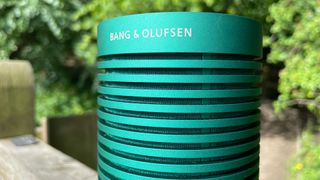
Bang & Olufsen Beosound Explore review: Verdict
I'm a big fan of the B&O Explore. It's a great size, it's one of my favourite gadget designs in years, I think it gets its music balance spot on, and that gigantic battery life is exactly what I want from a portable speaker.
The fact that its music sounds slightly constrained is perfectly consistent with other smaller portable speakers, but as I mentioned before, the big issue the Explore has for me is the existence of the B&O A1 v2. Its sound is a big step up, and it still has so many of the Explore's advantages. I'd happily pay the extra for that any day.
However, if you definitively want something more like the Explore's size, shape and specific features, it's my favourite of its kind.
Bang & Olufsen Beosound Explore review: Also consider
Okay, I've already made my case for the B&O A1 v2 as the main thing to consider, but let me also make the case against it here: the A1 v2 has the same dust- and waterproofing as the Explore, but it doesn't appear to be quite as rugged. It has a broader, flatter shell on one side that's less thick and has more holes drilled in it – great for sound, but it means this half is way more likely dent from a drop on a rock that the Explore would shrug off. Although it's still very solid overall – I'd happily take it with my on my non-extreme adventures. Its battery life is lower too, but it still promises 18 hours, so it's hardly a failure on that front.
If you want something as close to the Explore as possible, but for cheaper, the UE Wonderboom 2 is the winner, no question. It's a similar size, similar toughness, and sounds great for the price. It floats in water too, which the Explore does not.
And if you want something that can really crank up the volume and sound expansive while doing it, the JBL Charge 5 is rugged, capable, and sounds truly impressive overall.
Sign up to the T3 newsletter for smarter living straight to your inbox
Get all the latest news, reviews, deals and buying guides on gorgeous tech, home and active products from the T3 experts
Matt is T3's former AV and Smart Home Editor (UK), master of all things audiovisual, overseeing our TV, speakers and headphones coverage. He also covered smart home products and large appliances, as well as our toys and games articles. He's can explain both what Dolby Vision IQ is and why the Lego you're building doesn't fit together the way the instructions say, so is truly invaluable. Matt has worked for tech publications for over 10 years, in print and online, including running T3's print magazine and launching its most recent redesign. He's also contributed to a huge number of tech and gaming titles over the years. Say hello if you see him roaming the halls at CES, IFA or Toy Fair. Matt now works for our sister title TechRadar.
-
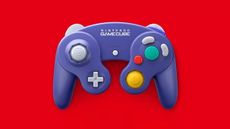 GameCube confirmed for Nintendo Switch Online, but there's a catch
GameCube confirmed for Nintendo Switch Online, but there's a catchNintendo Switch Online is getting GameCube games at last... you'll just need one major thing first
By Rik Henderson Published
-
 Philips Hue Secure cameras get major battery life boost with latest update
Philips Hue Secure cameras get major battery life boost with latest updateIt's the first update in a while that solely focuses on Hue Secure products
By Lizzie Wilmot Published
-
 We finally know the Nintendo Switch 2's launch date and price
We finally know the Nintendo Switch 2's launch date and priceThe Switch 2 is very imminent
By Max Freeman-Mills Published
